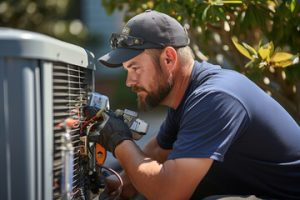Outdoor spaces define how we experience nature from the comfort of our homes. Deck building transforms ordinary yards into functional, aesthetic, and inviting extensions of living space. It is more than adding wood planks; it is about creating areas for relaxation, entertainment, and connection. With thoughtful design, decks enhance both lifestyle and property value.

The planning stage is crucial in deck building. Choosing the right location, size, and layout ensures the space is practical and harmonious with the surrounding landscape. Considerations include sun exposure, privacy, and accessibility. Proper planning prevents costly mistakes and sets the foundation for a successful project. Visit https://www.deckbuildermurfreesboro.com to learn more.
Material selection shapes the durability and look of the deck. Traditional wood offers natural warmth and texture, while composite materials provide longevity and low maintenance. Each choice affects appearance, feel, and long-term upkeep. Selecting materials aligned with lifestyle needs is essential for satisfaction.
Structural integrity is a non-negotiable aspect of deck building. Proper framing, joist spacing, and support posts prevent sagging and ensure safety. Building codes and engineering standards must guide every decision. A well-constructed deck can last decades without major repairs.
Safety features go beyond structural soundness. Railings, staircases, and non-slip surfaces reduce the risk of accidents. Lighting enhances visibility and ambiance, creating a welcoming environment at all hours. Incorporating safety into design ensures comfort and peace of mind.
Decks can be customized for various functions. Dining areas, lounge spaces, and even outdoor kitchens are possible on modern decks. Multi-level designs maximize space and create distinct zones for different activities. Customization allows the deck to meet both aesthetic and functional goals.
The integration of landscaping enhances the deck experience. Surrounding plants, trees, and water features create a seamless flow between deck and environment. Greenery provides shade, privacy, and a sense of tranquility. Landscaping transforms a deck from a structure into an immersive outdoor retreat.
Lighting plays a transformative role in deck building. LED strips, recessed floor lights, and ambient fixtures extend usability into the evening. Proper illumination highlights design features and sets mood. Thoughtful lighting makes the deck both practical and visually appealing.
Maintenance is a key consideration for long-term enjoyment. Wood decks require sealing and staining, while composite decks need occasional cleaning. Regular upkeep prevents deterioration and preserves appearance. Choosing materials compatible with desired maintenance levels simplifies life for homeowners.
Deck building has evolved with environmental awareness. Sustainable timber and recycled materials reduce ecological impact. Rainwater management and integrated drainage systems protect both the deck and surrounding areas. Eco-conscious decks offer a balance between function, beauty, and responsibility.
Outdoor living trends influence deck design. People increasingly seek spaces that merge comfort with natural surroundings. Fire pits, seating walls, and pergolas extend usability and appeal. Decks now serve as extensions of the home rather than isolated structures.
Technological advancements enhance deck construction. CNC-cut lumber, precision tools, and modular systems simplify building while ensuring precision. These technologies allow for creative designs that were previously difficult or expensive. Builders can execute complex patterns and multi-tiered layouts efficiently.
The resale value of a property often increases with a well-designed deck. Buyers perceive decks as additions to living space, enhancing lifestyle appeal. Decks provide tangible benefits beyond aesthetics, including functional outdoor areas. Investment in quality materials and craftsmanship ensures lasting returns.
Deck orientation affects usability and comfort. Aligning the deck for optimal sun and shade maximizes comfort throughout the day. Wind direction and views should also be considered. Thoughtful positioning enhances the overall outdoor experience.
Accessibility is a growing priority in deck design. Wide stairs, ramps, and level transitions ensure that the space is usable by all age groups and abilities. Universal design principles increase inclusivity. This approach allows everyone to enjoy the outdoor area safely.
The choice between raised and ground-level decks depends on terrain and function. Raised decks offer scenic views and airflow, while ground-level decks integrate closely with lawns or gardens. Both options have advantages depending on the surrounding environment. Evaluating these factors helps determine the best configuration.
Color and finish influence the aesthetic impact. Natural wood tones create warmth, while painted or stained options allow for bold statements. Finish type also affects weather resistance and maintenance. Harmonizing color with surroundings enhances cohesion and appeal.
Deck building often incorporates multifunctional features. Storage benches, integrated planters, and built-in seating optimize space and utility. These additions reduce clutter and make the area more functional. Multifunctional design ensures the deck serves multiple purposes without compromising aesthetics.
Sound and privacy are important in outdoor deck spaces. Screening, hedges, and acoustic panels reduce noise and create intimate areas. These features enhance comfort and usability for social gatherings or quiet relaxation. Privacy considerations make decks more enjoyable and versatile.
Seasonal adaptability extends deck usability. Retractable awnings, pergolas, and heaters allow comfort during varying weather conditions. Shade structures provide relief in summer, while windbreaks and heaters extend the season into colder months. Adaptable decks encourage year-round use.
The combination of indoor and outdoor flow is central to modern deck building. Seamless transitions from interior spaces to decks improve convenience and visual appeal. Sliding doors, extended flooring, and matching materials create cohesion. Integrating indoor and outdoor spaces enhances lifestyle and spatial perception.
Deck accessories enhance comfort and functionality. Furniture, lighting, and decorative elements contribute to ambiance and usability. Personal touches make the deck a reflection of taste and lifestyle. Accessorizing completes the design and ensures the space feels inviting.
Sustainability is increasingly integrated into construction practices. Locally sourced materials and environmentally conscious treatments minimize ecological impact. Efficient design reduces waste and energy consumption. A sustainable deck aligns style with responsibility.
Future trends suggest modular and flexible designs will grow in popularity. Sections can be reconfigured or expanded to accommodate changing needs. Modular decks offer versatility without major reconstruction. This flexibility caters to dynamic lifestyles and evolving outdoor uses.
Deck building also intersects with wellness and recreation. Yoga platforms, meditation spaces, and exercise zones integrate health into outdoor living. The design encourages engagement with nature and promotes well-being. Decks become more than leisure areas—they support lifestyle and mental health.
Maintenance technologies are improving longevity. Weather-resistant coatings, UV protection, and easy-clean finishes extend durability. These advances reduce long-term costs and preserve visual appeal. Smart maintenance solutions simplify ownership and enhance satisfaction.
Community and social considerations influence deck placement and design. Neighborhood regulations, view corridors, and shared spaces affect planning decisions. Cooperation ensures decks are harmonious with surrounding environments. Thoughtful planning fosters positive relationships and avoids conflicts.
Deck building has become a central element in creating versatile outdoor environments. It blends functionality, aesthetics, and sustainability to elevate living spaces. Thoughtful planning, material choice, and design make the difference between ordinary and extraordinary outdoor areas. Each deck becomes a stage for lifestyle, entertainment, and relaxation.
Ultimately, decks are more than structures; they are extensions of the home and expressions of creativity. They provide gathering spaces, personal retreats, and visual enhancements that connect people to their surroundings. With innovative design, durable materials, and attention to detail, deck building transforms landscapes into cherished living areas. And as lifestyles continue to embrace outdoor experiences, decks will remain at the forefront of home improvement and design innovation.


